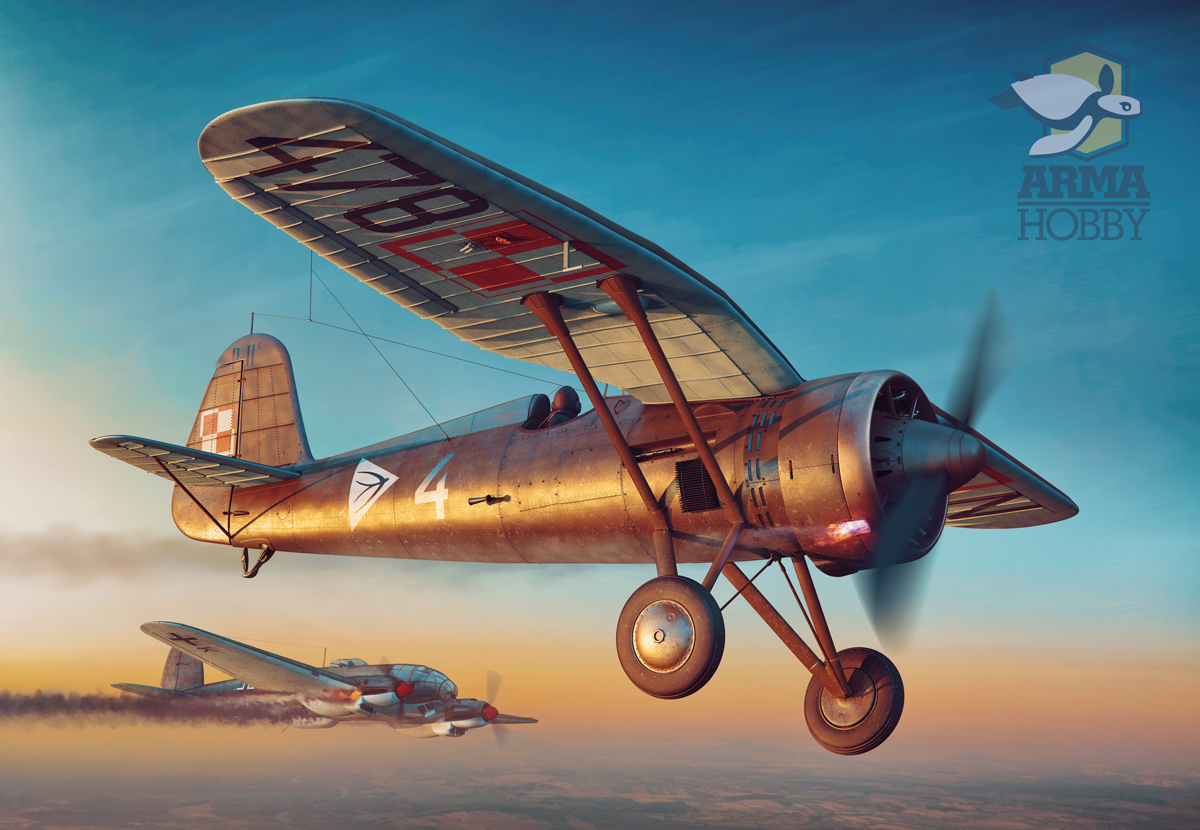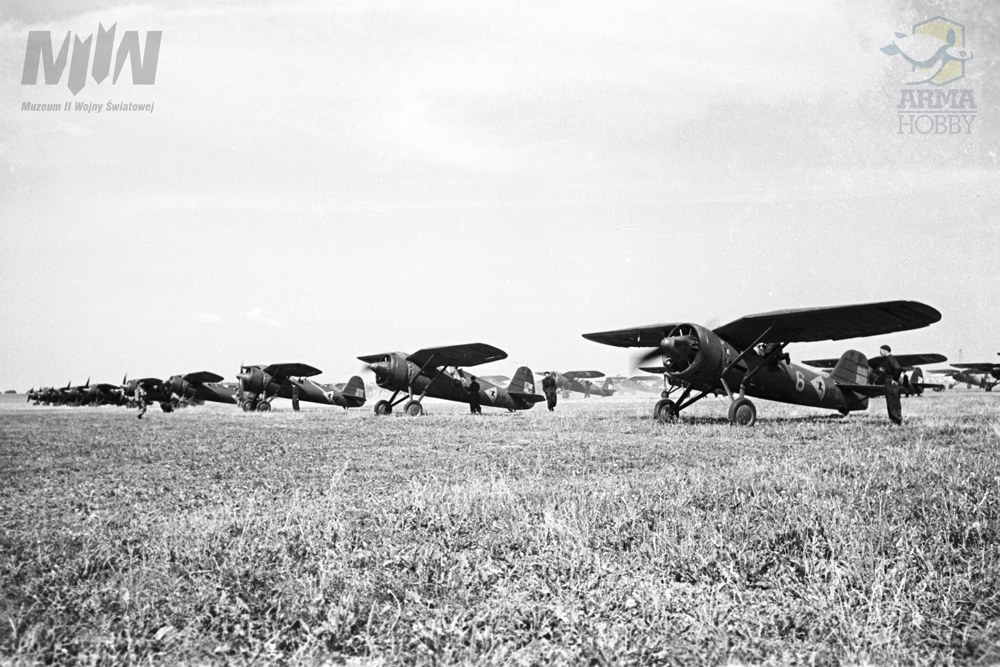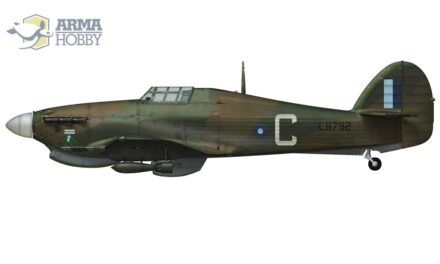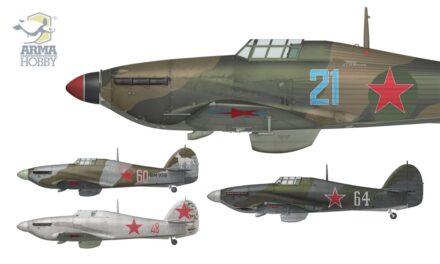
1 September. It is the 85th anniversary of September 1939, those five dramatic weeks in the history of Europe and the World when a lonely Poland defended itself against the double aggression of Nazi Germany and Stalin’s Soviet Union.
Although the numerical and technical superiority of the aggressors gave no chance of an even fight, the Poles defended themselves bravely, proving their skills. They flew PZL fighters, once the most modern in the world, but by 1939 already obsolete. It was on the PZL P.7 and P.11 that the Polish pilots gained combat experience, and on these aircraft they flew to Romania after the Soviet invasion on 17 September, to reach the West and continue the fight. Thanks to this, a year later they were victorious over the Germans in the Battle of Britain, where the Polish No. 303 Squadron proved the most successful among the Allies.

PZL fighters
In the early 1930s, when the whole world was flying fabric-covered biplanes, Poland made a great technological leap. Zygmunt Pulawski, an engineer at the Warsaw PZL plant, designed state-of-the-art, all-metal, monoplane fighters powered by reliable British Bristol engines. For several years they were the world’s best fighters and Poland exported them to many countries.
Samoloty Brygady Pościgowej w obiektywie Henryka Poddębskiego
Arma Hobby offers model kits of these legendary PZL P.11c in 1/72 and 1/48 scales, as well as PZL P.7a in 1/72 scale. These are very good models and have been assembled and appreciated by many modellers in Poland and around the world. There were winners of international competitions among them!
Polish squadrons in defence of the homeland
In September 1939, the main fighter force was the Pursuit Brigade assigned to the defence of the capital, subordinate to the Commander-in-Chief and guided from the command centre in Warsaw. It comprised four Warsaw P.11 squadrons and the 123rd Squadron assigned from Kraków on the older P.7a. The remaining 10 fighter squadrons were distributed among the various armies as their cover and support.

Depending on their assignment, the squadrons followed a very different combat path in September, but the beginnings were similar – just before the German attack, all Polish combat aircraft were moved from their bases to camouflaged field airfields. Thanks to this manoeuvre, contrary to German propaganda, not a single Polish combat aircraft was destroyed at an airfield on 1 September!
The Pursuit Brigade over Warsaw
The squadrons of the Pursuit Brigade, operating from a hub of airfields around the capital, were guided to the enemy by an extensive network of observation posts and radios. As long as the system worked and there were enough planes, the Poles were able to successfully defend the city against large-scale raids by Luftwaffe bombers escorted by Messerschmitts.
Uskrzydlone salamandry cz. 2, 112 Eskadra Myśliwska w obronie Warszawy
Army squadrons on the front line
The squadrons assigned to the armies were close to the front line at the outbreak of war and were engaged in a variety of sorties for the ground forces – fighting enemy reconnaissance aircraft, covering their own troops, reconnaissance or bombers, and even ground attacks on enemy troops.
The most dramatic episode of the fight of the army fighters was the attack of the Toruń Wing (Squadrons 141 and 142) on the German armoured columns near Grudziądz. The Squadron Leader, Capt. Florian Laskowski, was killed in the attack.
The second extremely interesting story about army aviation is the fate of the Poznan squadrons, which fought actively for the longest time on their PZLs bearing the raven badge, including in the great Battle of Bzura – a counterattack by Polish forces west of Warsaw.
#1939
On our blog Armahobbynews.pl/en/ you will find a lot of material related to the 1939 September, its heroes and the aircraft they used. Finding them is easy, as we have tagged them with the 1939 tag. When you select the relevant tag, all articles tagged with it will be displayed. The PZL P.7a and PZL P.11c aircraft, as well as each of the Arma Hobby model kits, also have their own tag – specific kits can be searched for by entering their catalogue number (in the case of the 1/48 PZL P11c Expert Set, this is 40001). When you select the tag of a specific kit, you will see articles about the contents of the box, historical material about specific markings, but also galleries of the assembled models and reviews!
Modeller, son and father of a modeller. Loves digging through references and analysing old photographs. He builds aircraft, ship and vehicle models, the older the better. He has a weakness for Polish equipment, but does not despise the RAF, FAA and Great War topics. A journalist by training.
This post is also available in:
 polski
polski





